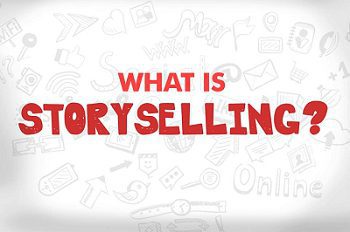Many brands are embracing the convergence of content and commerce known as “storyselling” — even though metrics around its effectiveness are still being developed. The ROI of storyselling can be difficult to measure, because interactions are more about building positive relationships with consumers versus achieving an immediate conversion.
“Telling stories is a way to tell your company’s point of view, and we think about it as adding value to shoppers’ experience,” said Amanda Hesser, CEO and Co-Founder of Food52, which sells kitchen products. Food52’s storyselling efforts have helped the retailer improve its conversion rates by 20% over the past year, but she believes its true value will be long-term. “For example, if a customer sees a platter we’re selling that has a salad on it and they click on the salad recipe, that’s still a win, because you’ve piqued their interest. If they don’t convert but you’re building trust with them, you’re building lifetime value.”
Hesser was a panelist at the NRF Big Show 2017 session, titled Storyselling: How the Convergence of Content and Commerce Builds Customer Experiences That Sell. Key takeaways from the session included:
Advertisement
• Devices like Siri, Amazon’s Alexa and Google Home are becoming key platforms for content, particularly as machine learning allows them to continuously refine affinities and preferences for individual consumers. Brands are already vying to be part of the “consideration set” for these solutions, said Ryan Ross, EVP, Marketing and Digital Commerce, HSN.
• Influencers such as bloggers can be a powerful part of storyselling efforts, both to amplify a brand message and assist with personalization efforts. Brands “can’t scale to converse with every customer, but if you identify the influencers that speak about your brand with authenticity, their reach is much more amplified than what you can talk about,” said Troy Collins, CEO, Endource Ltd., which connects consumers with items that have been endorsed by fashion magazine editors or fashion bloggers.
• Leveraging consumer-generated content, particularly on visually oriented platforms, is a critical piece of a successful storyselling strategy. “Instagram provides a platform with a low barrier to entry for creative people with a sense of style, as well as influence on like-minded people,” said Collins. “These Instagrammers have a strong voice. When they support something, it sells out, because of their authenticity.”
• Brands cannot put all their storyselling eggs in one basket. “Retailers need to create and deliver the appropriate content for wherever the customer is,” said Ross. “That’s what the consumer is influencing the most, that you can’t have a single focus on one channel. You have to dabble in them all and be constantly testing and changing. It’s an iterative process to discover the things that keep the conversation going.”
The Perils Of Poor Personalization
Effective storyselling is strengthened by personalization, but this also presents one of the biggest challenges brands face. “Personalization is a double-edged sword,” said Collins. “If you get personalization wrong, it’s almost worse than not doing it at all.”
Making effective use of bloggers and other influencers is one way to hedge your bets with personalization. In fashion, for example, bloggers tend to focus on narrow niches, so “When a customer interacts with a specific product that has been endorsed by a specific blogger, that customer is likely to like other products that blogger has endorsed,” said Collins.
The Challenge Of Measurement
Measuring the true impact of storyselling is the other big hurdle. “It would be great if there was a formula for measuring the impact of storyselling, but you have to be continuously responsive,” said Chris Field, Director of Retail Connections. “Paid marketing is more established, which is comforting: ‘If we spend X dollars on Facebook ads we’ll get Y.’ But if we do a video series and get people engaged, it’s more like ‘Hopefully this group will convert.'”
Anecdotally, however, more content-oriented techniques tend to gather in higher-value customers. That’s been the experience for Food52: “We compare the cost of audience acquisition through traditional means versus when we’re producing the content, and there’s a much higher value with the latter group of customers,” said Hesser.
For storyselling to become a part of more marketers’ tool kits, new metrics will need to be implemented. “People are asking about the value of content and how it plays in the customer journey, in taking people to the tip of conversion,” said HSN’s Ross. “Analysis is still nascent. How many times does a customer need to be exposed to your content, from you or your communities, to actually convert to your brand? What’s the value of this piece of content as we expose it in all these different places?”









